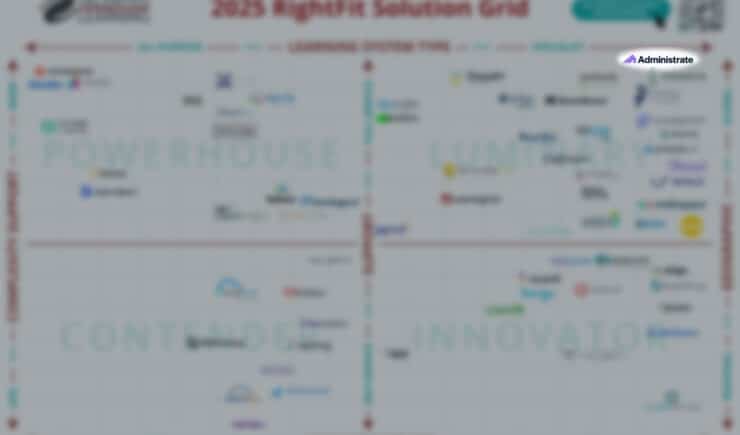In the last few years, training delivery techniques have advanced more than in the past two decades. That’s a bold claim, but it comes down to two simple observations:
- eLearning has been around for a long time, but recently, innovative educators and engineers have begun to fully explore its potential applications. Mobile-first “snackable” learning has already started to gain widespread acceptance. More abstract concepts like metaverse learning are rapidly advancing from science fiction to early practical implementation.
- The disruption of 2020 forced an abrupt and often permanent shift away from traditional ILT. There are applications where in-person learning is beneficial or even necessary. But for many companies, being forced to move online was just the momentum they needed. Now that they have these new tools, why bother going back?
But while training delivery has never been more innovative, the same can’t be said for training management. Educators and instructors are charting a bold, data-driven future for learners with cutting edge techniques and technology. But that future seems to be powered by spreadsheets, manual data entry, manual mail merges, and inflexible, point-solution training software.
Good management is the engine that drives successful operations. A learning and development strategy relying on innovative techniques just won’t perform without the management acumen to support it.
It’d be like running power tools off of a hand-cranked generator. Ultimately, the performance of the tool is limited by the investment in powering it. If you want your team to be capable of delivering training at scale, you need to make that investment.
Radical innovation in training delivery won’t be fully realized until it’s been given proper support. That means a revolution in the management of training – and more specifically, a revolution in training management software.
How Training Management Fell Behind
The biggest reason that investments in training management have been limited is simply that the current system, inefficient as it is, can be made to work. After all, with enough time, money, and manpower, anything will work well enough. But are your training management practices leaving you starved of the resources and time needed to improve your operations?
RIght now, most training managers are in a kind of twilight zone. Disconnected learning technology, endless spreadsheets, and an overreliance on manual tasks keeps training management resource-intensive.
It isn’t so inefficient that operations grind to a halt. But using these outdated practices is high-maintenance. That means taking resources away from delivering training so you can continue to manage it.
With new, experimental learning techniques becoming more common, the problem gets even worse, because these are rarely plug-and-play solutions.
And the rapid adoption of innovative learning techniques is only making that management crisis worse. These new tools need to be tested and analyzed to prove that they’re right for your particular situation.
For example, asynchronous eLearning has many use-cases, but it might prove to be inefficient at teaching complex procedures where a live instructor’s assistance could be more helpful. Snackable, mobile-first learning modules are a brilliant way to reinforce principles like company culture, but might struggle to teach in-depth concepts not easily boiled down to a bite-sized video. Social learning programs are a great way to help employees become confident in their workflow, but might not satisfy strict regulatory requirements.
You need to be able to experiment with these new methods and evaluate how effective they are at meeting your business’s needs. And that means capturing, analyzing, and mining as much training operations data as possible to assess your new tools.
There’s rarely capacity for that level of analysis when using outdated management practices that struggle just to maintain, let alone analyze, existing operations.
There are a few ways that point-solution software might be holding your team back from realizing the potential of your operations. Let’s take a look at some of them now – and see how Administrate’s training management software can help.
Repetitive Manual Tasks
There are certain tasks that need to be completed for each learner or course in the system. One of the biggest, for example, is clearly communicating with learners and instructors. That simple task can amount to hundreds or thousands of emails over a short period of time.
Many teams handle tasks like these on an ad-hoc basis, manually. That leads to a huge amount of effort expended just to keep up with the size of your operations.
The real goals of your learning and development strategy can easily get lost in the sea of administrative tasks needed to support it. Controlling that administrative burden is key to making sure that the real goal – delivering quality training – is being met.
A human can only merge so many mailing lists in a day. And that means that as your operations scale and become more complex, these repetitive tasks absorb more of your time.. As new and unfamiliar delivery techniques require more communication to keep learners up-to-date, that administrative burden only gets bigger.
These tasks can and should be automated – and in most fields, they are. But for a field where communications is key, most training software is woefully underequipped to support automated communication strategies.
Tools that can automate repetitive tasks are key to reducing the amount of manual effort needed to maintain operations. Administrate’s training management software can automate tasks like communications, scheduling, updating course templates, awarding learner badges, and more. That frees up time to focus on more important, data analysis tasks.
Inflexible Reporting and KPI Tracking
Most training software does one or two things very well, and beyond that, isn’t very useful. That’s fine if your needs perfectly align with what the software developer expected. But if your situation is at all unique, the reporting tools you have available probably aren’t up to the task. If you need to look at an unusual statistic, or compare metrics in an unusual way, most software isn’t equipped for that.
That makes comparing training data to the data from other departments a nightmare. You need to be able to connect training data to departmental KPIs in order to demonstrate training’s ROI. Is your software preventing that?
Administrate, on the other hand, is committed to flexibility and customization in reporting. Administrate’s training management platform is fully integrated with our reporting engine. That enables you to choose any metrics from across your training operations to report on. You can easily generate custom reports illustrating what you need – not what some point-solution software thinks you need.
Outdated Scheduling and Resource Management
Training operations take resources – be they textbooks, classrooms, or multi-million dollar simulators. And it shouldn’t be forgotten that employees are resources too – instructor time is a resource. Getting the most use out of resources is critical to delivering training effectively at scale. No less important is making sure that resources are being used sustainably.
In the past, that meant days or weeks designing schedules for courses, instructors, and learning materials. The process is rarely much better than guessing. Throw random courses onto the schedule and then slowly fit everything else in through trial and error. It’s slow, and inefficient, and often, the trials don’t find all the errors.
That means costly double-bookings and disruptions to the delivery of training. With new training methods often having unusual scheduling needs, that problem is only exacerbated.
Administrate’s training management software provides a solution with our Scheduler feature. Scheduler can assess your resource needs and iterate through all possible schedules to find the best fit for your Training team. No more taking weeks to find a mostly-workable answer. With proper training management software, it can take just minutes to find the perfect one.
Demand for training will never stop growing. Maybe you’ve run into some of the problems listed above in your own operations. Your team might face some major challenges when it comes to delivering training at an ever-increasing scale. Our Scalability Index Assessment can provide you with personalized, data-driven insights into your team’s unique position.





